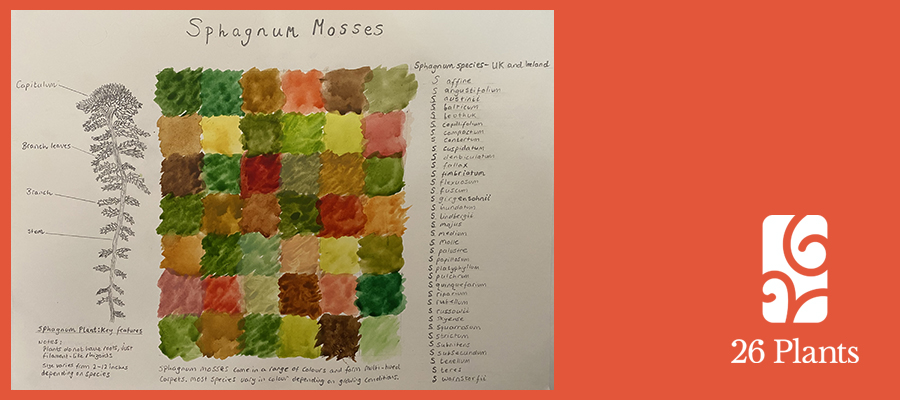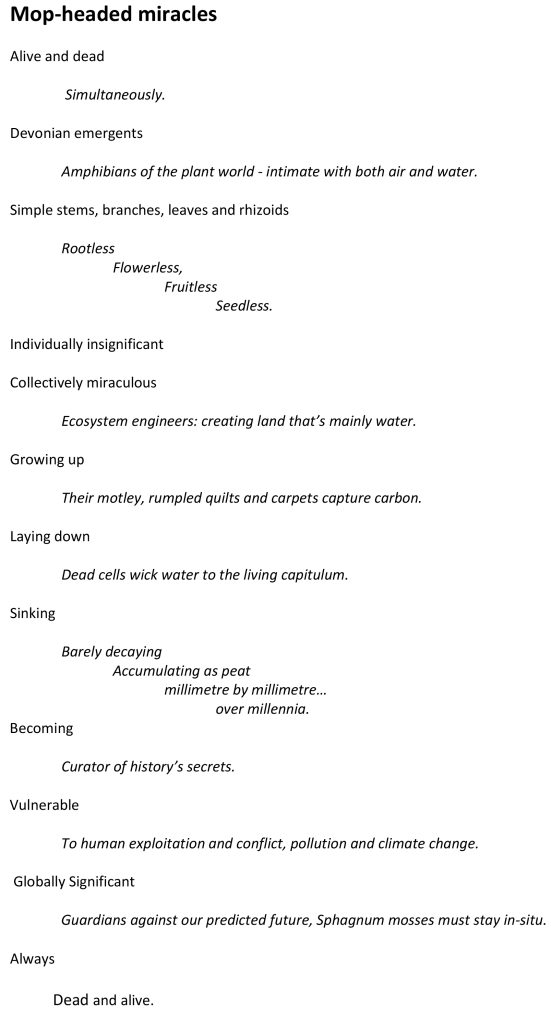Sphagnum Moss
Sphagnum
Sarah Hill


My introduction to Sphagnum mosses was in Northumberland, on a memorable class visit to auger peat cores for pollen analysis, where I almost lost a Wellington to the malodorous, oozy depths beneath the bog’s spongy surface. On my second encounter, in Bavaria, our group pogoed in unison on a raised bog, sending ripples across its surface, causing the fringing trees to kiss crowns as they rocked to-and-fro.
Forty years later, I am stunned to discover that there is more living carbon in Sphagnum mosses than any other single genus of plant on the planet. More carbon is stored globally in the peatlands that Sphagnum mosses create below their sunlit carpets, than is stored by the world’s forests. Indeed, these bog habitats are the globe’s second largest store of carbon, after the oceans.
Almost 10 per cent of the UK’s land area is covered in bog and it’s the country’s single most important terrestrial carbon store, locking away at least 3 billion tonnes of carbon.
It seems quite incredible that these small, mop-headed, sodden plants, that grow in dense, colourful communities in peat bogs and other wetland habitats, play such a vital role in mitigating climate change.
Peat bogs are crucial water reservoirs too. In the UK 70 per cent of our drinking water comes from peatland river catchments. Only one in 20 cells in a Sphagnum plant is alive. The remaining cells are dead but integral to the plant’s success, filled with up to 20 times their weight in water.
Appearing as some of the first land plants, more than 350 million years ago, Sphagnum mosses are now regarded as keystone species, creating the acid, water-logged, nutrient- poor living conditions that allow, other specialist wetland plants and animals to thrive and, organic matter to be preserved for millennia.
Today, Sphagnum mosses and peatlands are under threat from factors including: harvesting, agricultural drainage, burning, air pollution, tree planting and over-grazing. In the UK 80 per cent of peatland habitats are believed to be damaged.
However, there is some good news; researchers have developed ways to restore these damaged habitats, enabling Sphagnum mosses to recolonise and start building up peat again. There has also been a successful Wildlife Trusts’ campaign “Keep peat in bogs not bags”. From 2024 selling peat compost for domestic use in England will be banned. Two small steps on the way to protecting the water-trapping, carbon-catching Sphagnum mosses.
Image by Sarah Hill
